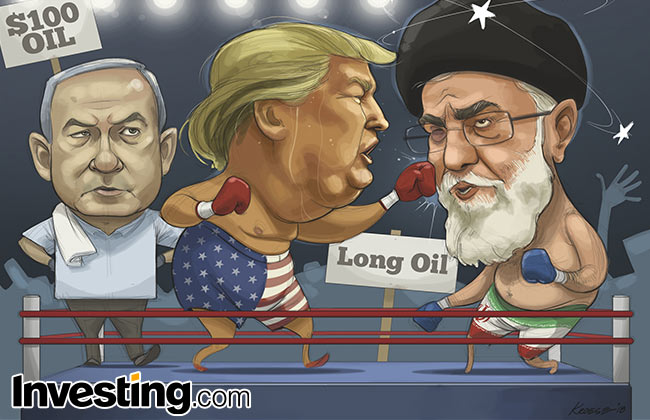Investing.com - Oil prices surged to their highest level in three-and-a-half years this week, after U.S. President Donald Trump walked away from an international nuclear deal with Iran and reimposed “the highest level of economic sanctions” against the country.
Trump said he quit the deal because Tehran continues to work on a bomb, based on evidence provided by Israeli Prime Minister Benjamin Netanyahu, and it backs terrorist groups around the Middle East.
Some analysts have said the reinstatement of sanctions could lead to tighter global oil supplies as they make it more difficult for Iran to export oil.
Iran, which is a major Middle East oil producer and member of the Organization of the Petroleum Exporting Countries (OPEC), resumed its role as a major oil exporter in January 2016 when international sanctions against Tehran were lifted in return for curbs on Iran's nuclear program.
Oil prices clocked up more multi-year highs on Thursday, as futures rose sharply in response to the announced measures.
Brent crude futures, the international benchmark for oil prices, hit their highest since November 2014 at $78.00 per barrel.
U.S. West Texas Intermediate (WTI) crude futures also marked a November-2014 high, at $71.89 a barrel.
Worries over geopolitical tension surrounding Iran could mean that oil prices move closer to the $80-$100 range than the $60s-to-$70s expected by analysts this year.
Goldman Sachs (NYSE:GS) said the planned unilateral U.S. sanctions against Iran would likely have a "high level of efficiency".
As a result of sanctions and because of risks to supplies elsewhere, especially in Venezuela, the U.S. bank said "this leaves risk our summer $82.50 per barrel Brent price forecast (is) squarely skewed to the upside".
Sanctions come amid an oil market that has already been tightening due to ongoing efforts by Saudi Arabia and Russia to cut back on production to reduce a glut.
To see more of Investing.com’s weekly comics, visit: http://www.investing.com/analysis/comics
